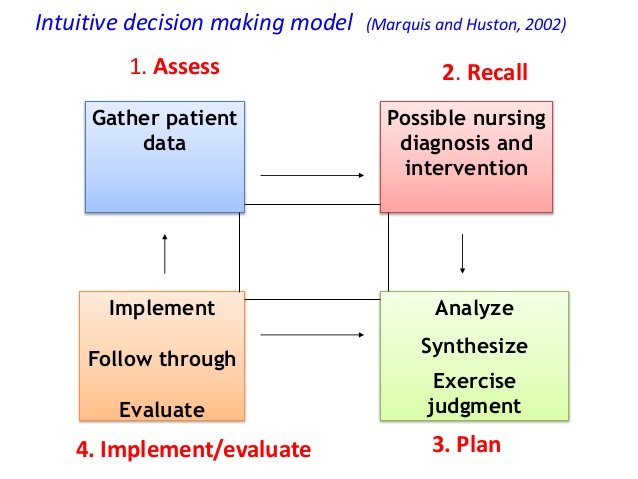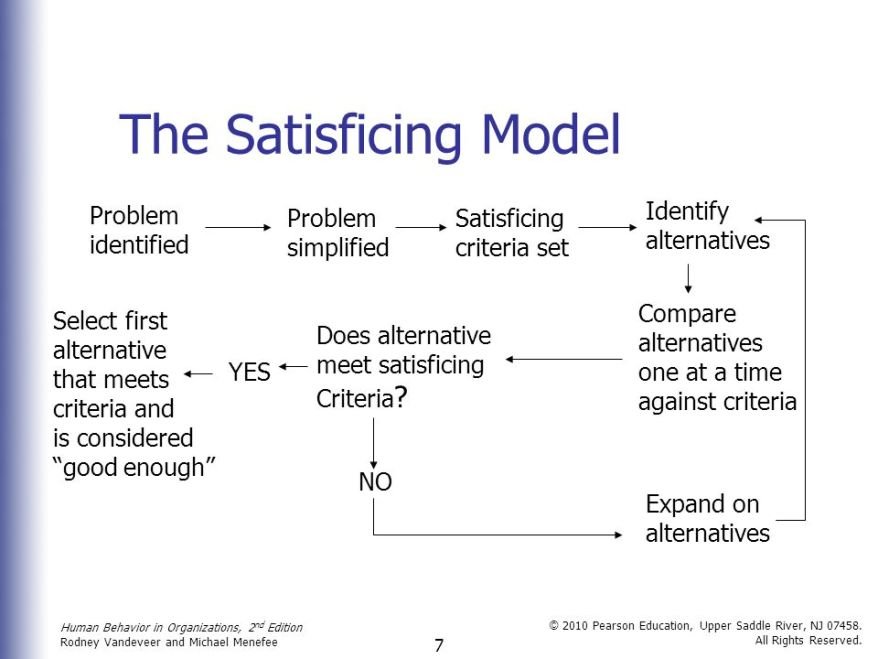The Classical Model
On confrontation of a manager with a certain decision making situation, the manager would collect all the critical information and the data that is required for performing a particular activity and also would take the decision that will certainly be for the betterment of the organization.
The Administrative Model
In such a model, the manager has more concern for himself.
b. On confrontation of a manager with a certain decision making situation, the manager would collect whatever information or the data that will be available and then will take a decision, which may not be in the best interests of the organization but will certainly be good for fulfilling his personal interests.
c. Expediency and the opportunism, both act as the hallmarks of the Administrative Model.
The Herbert Simon Model
- This model is linked with the decision making process.
b. Explains the core of the decision making.
c. Used as the base for explaining the decision making process.
d. According the Herbert Simon Model, the process of the decision making consists of the following phases:
A) The Intelligence Phase
In this phase, the various activities for finding out the problems related to the searching of the operating environment are involved. By this, the identification of the various conditions can be done which ultimately helps in taking the decisions at the different levels. Extensive and the comprehensive database is must for the intelligence phase, making this phase very suitable for searching or scanning of the environment.
In this phase, the type of the environment forms a very major factor and hence the types of the environment can be categorized as the follows:
- The Societal Environment: Mainly includes the economic, the legal and the social environment and it is this type of the environment in which the organization operates.
- The Competitive Environment: Includes the understanding and the analyzing of the characteristics, the trends and the behavior of or at the market place and also the various players of the market in which the organization operates.
- The Organizational Environment: Includes the various capabilities, the strengths, the weaknesses, the constraints and the various other factors that affect the ability of the organization to discharge or operate its various types of the activities.
B) The Design Phase
- The inventing, the developing and the analyzing of the various alternatives or the solutions to the particular problem forms a major part of this phase. The various steps that are to be followed in this phase can be summarized as the follows:
- Support in getting the in depth knowledge of the problem.
A correct model of the situation can be made and the assumptions of the model need to be tested.
Support for the generation of the solutions can be obtained by:
I. Manipulation of the model for the development of the insights.
II. Creation of the database retrieval system.
- Support for testing the feasibility of the solutions.
C) The Choice Phase
The selection of a specific alternative or the course of the action from the ones which have been generated and considered during the design phase, takes place during this phase. The choice procedure and the implementation of the chosen alternative form a very major part of the Choice phase.
The flow of the activities takes place from the intelligence phase to the design phase and then finally to the choice phase. But one very important point that must be remembered here is that at any phase there may be a return to a previous phase.
Limitations of the Simon Model
1. This model does not go further than the choice model.
2. Does not include the cognizance of the implementation and also of the feedback aspects.
Main types
There are many types of decision making and these can be easily categorized into the following 4 groups:
- Rational
- Intuitive
- Combinations
- Satisficing
- Decision Support Systems
- Recognition primed decision making
Types
Rational
Rational decision making is the commonest of the types of decision making that is taught and learned when people decide that they want to improve their decision making. These are logical, sequential models where the emphasis is on listing many potential options and then working out which is the best. Often the pros and cons of each option are also listed and scored in order of importance.

The rational aspect indicates that there is considerable reasoning and thinking done in order to select the optimum choice. Because we put such a heavy emphasis on thinking and getting it right in our society, there are many of these models and they are very popular. People like to know what the steps are and many of these models have steps that are done in order.
People would love to know what the future holds, which makes these models popular. Because the reasoning and rationale behind the various steps is that if you do x, then y should happen. However, most people have personal experience that the world usually doesn’t work that way!
Intuitive
The second of the types of decision making are the intuitive models. The idea here is that there may be absolutely no reason or logic to the decision making process. Instead, there is an inner knowing, or intuition, or some kind of sense of what the right thing to do is.

And there are probably as many intuitive types of decision making as there are people. People can feel it in their heart, or in their bones, or in their gut and so on. There are also a variety of ways for people to receive information, either in pictures or words or voices.
People talk about extra sensory perception as well. However, they are still actually picking up the information through their five senses. Clair sentience is where people feel things, clair audience is hearing things and clairvoyance is seeing things.
And of course we have phrases such as ‘I smell a rat’, ‘ it smells fishy’ and ‘I can taste success ahead’.
Other types of decision making in the intuitive category might include tossing a coin, throwing dice, tarot cards, astrology, and so on.
Decision wheels are usually more humorous than intuitive but they do have a serious application.
Combinations
Many decisions are actually a result of combinations of rational and intuitive processes. This can be deliberate where a person combines aspects of both, or it can occur unwittingly.
For example, a person has listed the pros and cons of the options, assigned numerical values and added them all up. (The rational part.) But the end result is not really satisfactory, they are uneasy somehow (the intuitive part), so they change the parameters, and the numbers add up differently. This new result is more ‘satisfactory’, so they go with that one.
Satisficing
Instead of evaluating all the possible options and choosing the best, satisficing is where we pick the first one that will give us the result. We choose an option that is ‘good enough’, one that satisfies our needs and sacrifices other potentially better options. Hence, satisfice.

Decision Support Systems
Because computers can process large amounts of data quickly, they were soon put to use to help make decisions. Decision Support Systems range from a simple spreadsheet to organize information graphically, to very complex programs organizing info in international companies and including artificial intelligence that can suggest alternative options and solutions.
There are various types of decision making systems depending on how many people are involved, the form of the information being processed, what type of result is required, and so on.
There are pros and cons to using computers in this way, and of course, the computer is only as good as the information that it is processing. Which means that it still comes down to the humans…!
Recognition primed
Gary Klein has spent considerable time studying human decision making and his results are very interesting. He believes that we make 90 to 95% of our decisions in a pattern recognition way. He suggests that what we actually do is gather information from our environment in relation to the decision we want to make. We then pick an option that we think will work. We rehearse it mentally and if we still think it will work, we go ahead.
If it does not work mentally, we choose another option and run that through in our head instead. If that seems to work, we go with that one. We pick scenarios one by one, mentally check them out, and as soon as we find one that works, we choose it.
He also points out that as we get more experience, we can recognise more patterns, and we make better choices more quickly.
Of interest here is that the military in many countries have adapted his methods because they are considerably more effective than any of the types of decision making we’ve discussed already. In fact, you could say that his model is a combination of the rational and intuitive approaches. (That’s why I said above that there are only 4 groups!) It’s also an example of satisficing!
One thought on “Model Building & Decision Making”